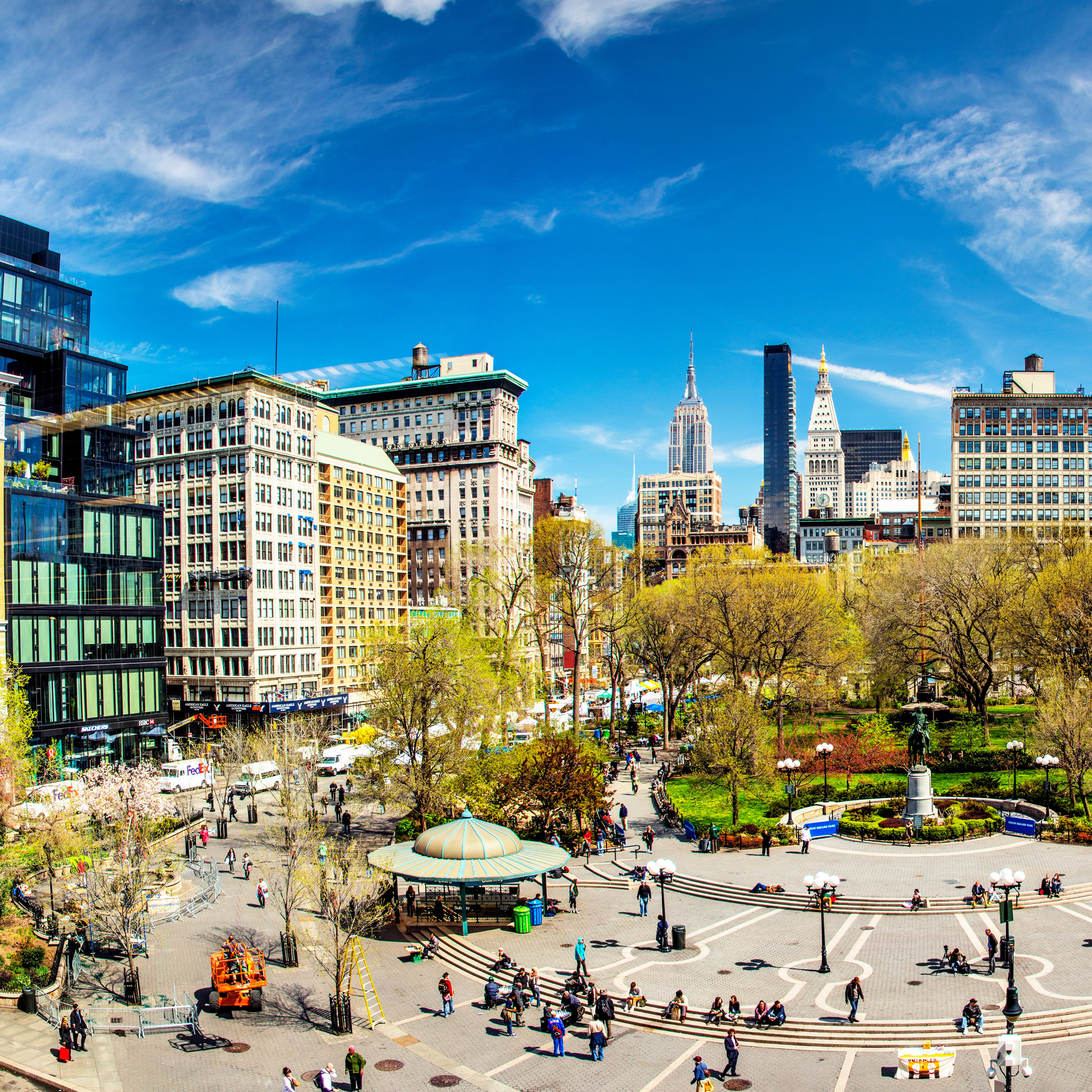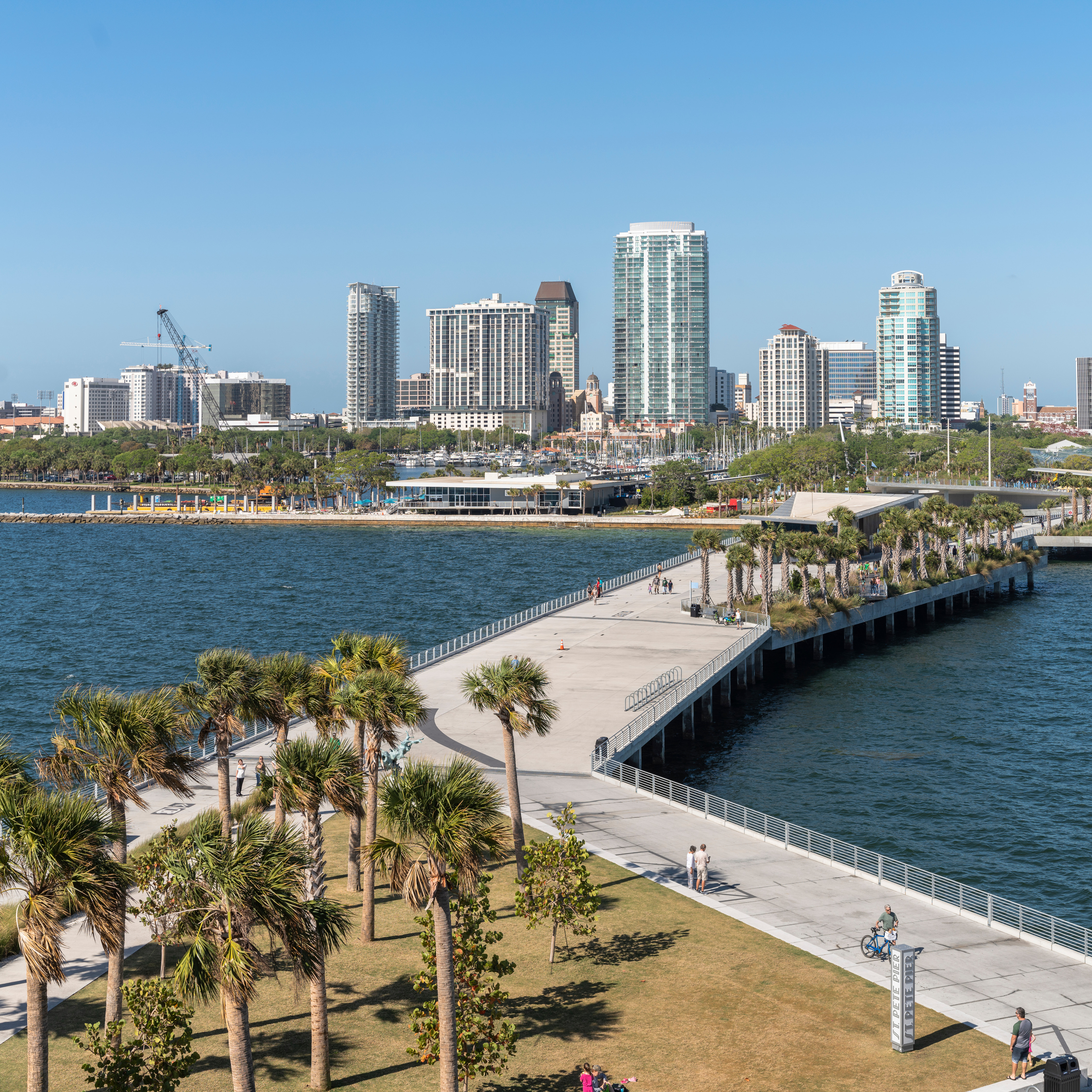Chapter 1
The Shape of American Cities
Shaping Tomorrow’s Cities: Fostering Resilient and Vibrant Urban Environments
5 Minute Read
Most U.S. metros are sprawling by international standards. The U.S. population grew rapidly in the 20th century, alongside development of the automobile and the highway system. Infrastructure growth, plentiful available land and the American Dream of single-family homeownership pushed development away from city centers and into suburban and exurban areas. As the suburbs became favored places for families to grow, many cities were relegated to primarily being business and cultural hubs.
Only 30% of residents in large U.S. metros live within 15 miles of the city center, compared with 50% in most global cities.
Figure 2: Population Concentration - U.S. vs. International
Share of population living in urban areas varies greatly across the U.S.
The scale, concentration and location of urban density (people per square mile) vary significantly across U.S. metros and their core cities. This report groups 19 U.S. markets into four archetypes based in part on these urbanization patterns:
- Super Cities: Los Angeles, New York
- Mixed Majors: Boston, Chicago, Philadelphia, San Francisco, Seattle, Washington, D.C.
- Sprawling Darlings: Atlanta, Dallas, Denver, Houston, Phoenix
- Developing Destinations: Austin, Charlotte, Miami, Nashville, Orlando, Tampa
New York and Los Angeles stand out for their sheer size as well as their large urban populations, with over 70% living in areas of urban density. Other U.S. markets are much smaller and less urban. Less than 20% of the population in the Sprawling Darlings and Developing Destinations (other than Miami) lives in an urban area, including 5% or less in Orlando, Tampa, Atlanta, Nashville and Charlotte.
Figure 3: Population Size and Urban Share by Market
Source: CBRE, IPUMS NHGIS, University of Minnesota, Data for Good at Meta, 2024.
Explore the below interactive tool to see how the population of the largest U.S. markets has changed since 1970.
Figure 4: Regional Population Growth – 1970-2020
Figure 4: Regional Population Growth – 1970-2020
Related Services
- Property Type
Office
Use the world’s most comprehensive real estate services platform to find innovative solutions for your needs as a corporate occupier or office investor.
- Property Type
Multifamily
Unlock the potential of your residential real estate with expert investment, financing, valuation, due diligence, design, management and leasing strat...
- Transform Business Outcomes
Consulting
Gain comprehensive guidance on insightful, executable real estate strategies for both investors and occupiers.
- Property Type
Retail Services
With integrated solutions, unique insight, and unmatched experience, we deliver successful outcomes for retailers, restaurateurs, investors, owners, a...
- Property Type
Hotels
CBRE Hotels delivers bottom-line impact to hotel clients globally by providing advisory, capital markets, investment sales, research & valuation s...
Related Insights
-
Podcast | Future Cities
Dancing in the Street: Fried Frank's Mechanic and Werner on New York City’s revival
April 30, 2024

Fried Frank’s Jon Mechanic and Michael Werner—attorneys steeped in the in’s and out’s of New York City dealmaking—share thoughts on the office market, affordable housing, recent legislative changes and much more.
-
Podcast | Future Cities
Land of Hope and Dreams: Nashville is booming. What’s next for the Music City?
April 23, 2024

What’s attracting young people, businesses and investment capital to Nashville? Highwoods’ Alex Chambers and CBRE’s Elizabeth Goodwin explain how the Music City has created a cool culture.
-

Tampa, Florida, is one of the hottest markets, with live-work-play appeal and the U.S.’s fourth-strongest labor market, according to a recent Wall Street Journal analysis. Tampa investor/developer Darryl Shaw and CBRE’s Mike DiBlasi explain how the city has become a magnet for institutional capital, expanding employers and top talent, and what other mid-size markets can learn from it.






